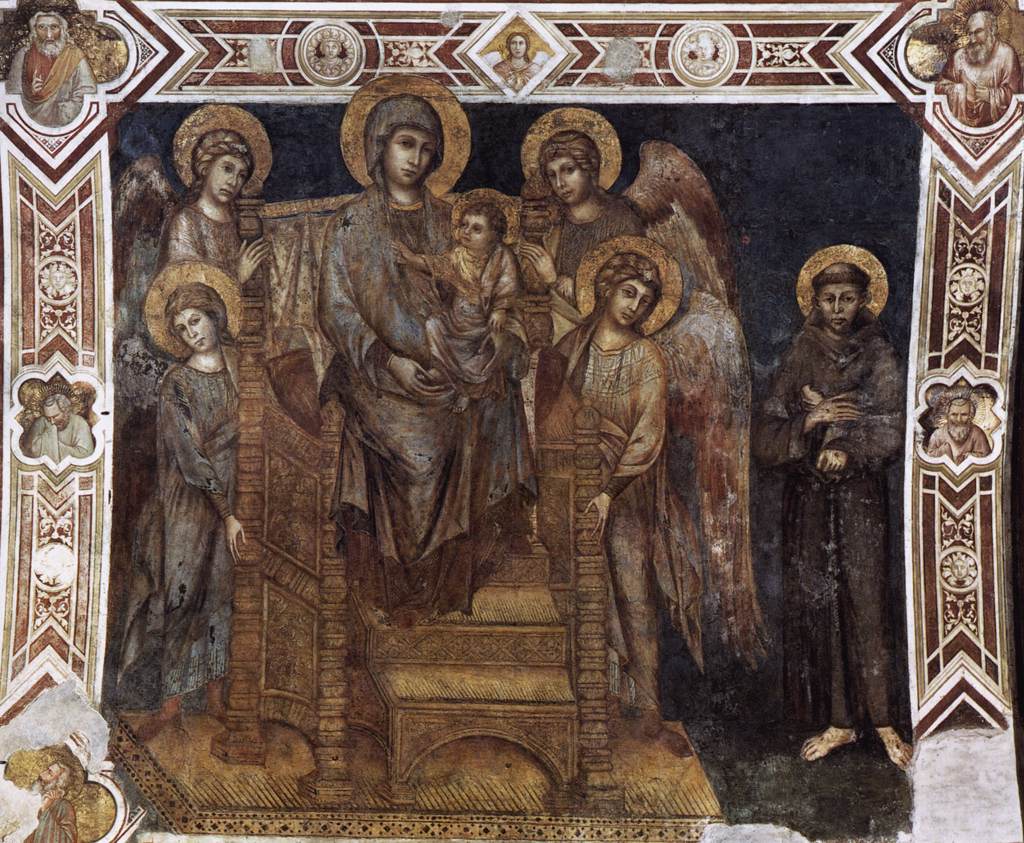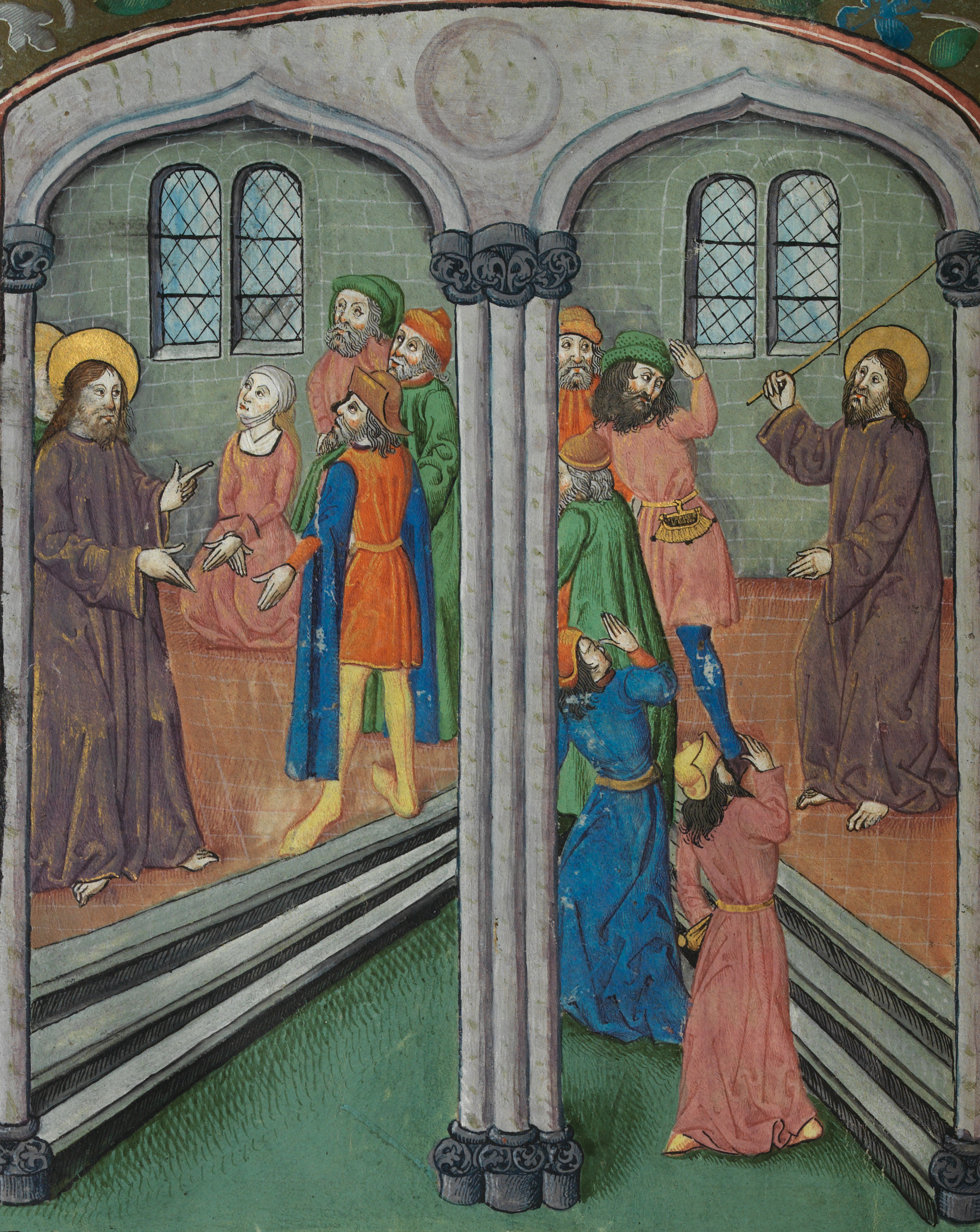Last time, we explored the etymology and usage of the word “saint ” throughout the centuries. Today, we’ll see what we find in the Catechism, Church documents, and other sources on the subject of sainthood. What we found last time is that a “saint” is one who is holy—one who is set apart.

Let’s start our study today by looking at the word “saint” in the Catholic Topical Index. Since we looked at the word “saint” in the Scriptures last time, we’ll start with the “Church teaching” segment.

I’m interested right now in any Church documents I can find on the matter, so I’m going to start with Lumen Gentium from the Vatican II documents.
This first result is interesting. Here we see that saints share in a part of Christ’s office:
“The holy people of God shares also in Christ’s prophetic office; it spreads abroad a living witness to Him, especially by means of a life of faith and charity and by offering to God a sacrifice of praise, the tribute of lips which give praise to His name. The entire body of the faithful, anointed as they are by the Holy One, cannot err in matters of belief. . . . the people of God adheres unwaveringly to the faith given once and for all to the saints, penetrates it more deeply with right thinking, and applies it more fully in its life.”[1]
We also find that sainthood is not simply an individual phenomenon, but is fully realized in the context of the whole community of believers—it is within the context of the Church that the saint is truly realized:
“The Church, whose mystery is being set forth by this Sacred Synod, is believed to be indefectibly holy. Indeed Christ, the Son of God, who with the Father and the Spirit is praised as ‘uniquely holy,’ loved the Church as His bride, delivering Himself up for her. He did this that He might sanctify her. He united her to Himself as His own body and brought it to perfection by the gift of the Holy Spirit for God’s glory. Therefore in the Church, everyone whether belonging to the hierarchy, or being cared for by it, is called to holiness, according to the saying of the Apostle: ‘For this is the will of God, your sanctification.’ However, this holiness of the Church is unceasingly manifested, and must be manifested, in the fruits of grace which the Spirit produces in the faithful; it is expressed in many ways in individuals, who in their walk of life, tend toward the perfection of charity, thus causing the edification of others; in a very special way this (holiness) appears in the practice of the counsels, customarily called ‘evangelical.’”[2]
There’s more here, too: We learn that not only is “everyone . . . called to holiness,” but also that those who make up the Church are called to “edify others.” This edification is more than a simple “being nice” to others, but it is pointedly evangelical in nature: the saints are called to encourage each other in the faith, helping the unbelief of not just the unbelievers, but also the believers themselves (cf. Mark 9:24).
There’s one more component I’d like to highlight from this document:
“The Son, therefore, came, sent by the Father. It was in Him, before the foundation of the world, that the Father chose us and predestined us to become adopted sons, for in Him it pleased the Father to re-establish all things. . . . All men are called to this union with Christ, who is the light of the world, from whom we go forth, through whom we live, and toward whom our whole life strains.”[3]
The universal aspect here is very important. “All” people are called to be in union with Christ—and it is Christ who calls us to this holiness. Sainthood isn’t just for a select few of us, it is for all people.
As we continue our study on sainthood, let’s not forget to look at the saints who stand as icons for us here and now. John Paul II and John XXIII were both men who exhibited the forms of holiness we read about here; they stand as a model of the faith that we can look up to.
* * *
[1] Catholic Church. (2011). Dogmatic Constitution on the Church: Lumen Gentium. In Vatican II Documents. Vatican City: Libreria Editrice Vaticana.
[2] Catholic Church. (2011). Dogmatic Constitution on the Church: Lumen Gentium. In Vatican II Documents. Vatican City: Libreria Editrice Vaticana.
[3] Catholic Church. (2011). Dogmatic Constitution on the Church: Lumen Gentium. In Vatican II Documents. Vatican City: Libreria Editrice Vaticana.





